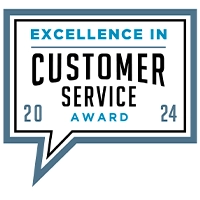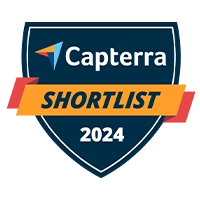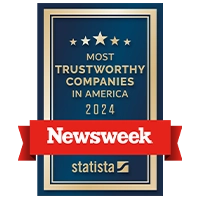Simplified HR and payroll for education
A single software to help you keep great educators and ace compliance


Why Paycom
Because HR and payroll should be an easy A

In education, it’s hard to excel in the face of high turnover and strict regulations. How do you deliver a holistic experience that inspires your best faculty and staff while prepping for compliance challenges?
Paycom makes it easy to find and vet qualified talent. And our reporting tools help you quickly identify trends, address employee needs and proactively prep for audits and other legal requests. This frees you to focus on what matters most: positioning your organization to serve students.
Award-winning HR and payroll innovation






names Paycom best app for employee-driven payroll
Real results
High Honors: How One Education Nonprofit Excelled With the Right Tech

For a California-based educational nonprofit, hard-to-use HR systems kept the organization from exceeding its goals and championing development. Read how our single software automated and streamlined the institution’s HR processes, helping boost engagement with flying colors.
“Paycom allows us to readily analyze and provide data about new hires, turnovers, costs and other trends we’re seeing. Paycom is a partner that truly hears us. It evolves as we evolve.”
—CHRO, education nonprofit

How we help
Help educators thrive
In an industry with such a powerful impact, providing a quality educational experience means empowering teachers and support staff with the tools they need to succeed. Because when they’re kept in the dark about their important data, it damages their trust.
Accuracy without fail
HR and payroll errors cause headaches for you and push your best faculty and staff away. So why not let them make sure it’s right? From simplified benefits enrollment to our self-service payroll experience, our single software guides employees to ensure their data is accurate before mistakes ever happen.
Stand the test of time
Your organization isn’t just made up of teachers. Different members of your institution — like substitutes, adjunct professors and more — may require unique timekeeping needs. Our time and attendance tools help ensure their hours are accurately recorded while preventing time theft.
Top-of-the-class compensation
With limited room to raise salaries, benefits can help you keep your top educators. Our Benefits Administration tool simplifies complex programs for admins and employees alike, including teachers’ retirement system funds, specified health insurance plans and more.
The perfect report card
When audits are the norm in education, missing data chips away at your compliance and patience. Our customizable reporting software helps you easily filter and organize workforce data in government-required formats. You can even use Paycom to easily and automatically create recurring reports for the most relevant employment laws — including FLSA, FMLA, EEOC and COBRA.
Keep the right people with the right skills

In education, the wrong hire can put your institution — and your students — at risk. Between limited resources and eternal background screenings, getting the talent you need when you need it isn’t easy. With Paycom’s single software, finding great educators and staff, developing their skills and even securing tax credits are simpler than you think.

Get an A in hiring
Tired of sinking hours into recruiting, interviewing and onboarding just for a candidate to miss the mark? With our intuitive and thorough talent acquisition tools, you can help ensure prospective faculty and staff don’t pose a risk to students.
Top-notch training
The last thing your educators want is boring, disorganized or overwhelming training. Our streamlined learning management system makes it easy for your institution to create engaging training paths. We also make it easy to administer mandated training on compliance, school policies, safety and other key topics.
Easy-to-track certifications
Continued learning and certifications are necessary in education. But managing them manually just piles more work on your plate. Our Certification Management feature simplifies the tracking of continued education and helps you get ahead of expiring certifications and licenses.
See what the education industry is saying about Paycom
Frequently Asked Questions
Learn more about HR technology in education
The right HR and payroll software helps educational organizations pay their teachers and staff accurately, hire and train the educators they need, and stay compliant with a host of regulatory requirements.
Paycom’s mobile-friendly HR and payroll app puts teachers in control of their own information. Employees have 24/7 access to view schedules, request time off and complete required training.
Because Paycom is a truly single software, data automatically and seamlessly flows systemwide, with no reentry required. Stay on top of compliance with automated reporting, which delivers the reports you need when you need them. Plus, keeping your workforce properly credentialed is easier than ever with automatic reminders as certifications near their expiration date.
From number of open positions and head count trends to EEO-1 reporting and labor allocation details, Paycom’s comprehensive reporting offers insights into HR data that spans the entire employee life cycle. Get a closer look with predefined reports for recruiting, time and attendance, payroll and more or utilize our advanced reporting to create custom reports for personalized insights.
With Paycom, you can set the earning profiles, labor allocation types, pay classes and salary grades that fit your organization’s needs, as well as various payroll processing schedules.
Paycom’s self-starting payroll begins at the start of the pay period, pulling everything that goes into payroll: time sheets, benefit deductions, new-hire information, compensation changes and more. With a real-time payroll dashboard, admins can monitor payroll instead of having to manage it every step of the way. Our payroll software automatically identifies errors, then guides employees to fix them before submission. That way, payday brings no surprises — just 100% accuracy and peace of mind.
Yes! Paycom’s robust reporting functionality offers both predefined and custom reports to fit your unique needs. Easily filter the exact specs you’re looking for and choose from several shareable file formats. Plus, with our Push Reporting® tool, you automatically receive the recurring reports you need when you need them.
With Paycom Learning, educational organizations have the flexibility to create their own training paths to help ensure their workforce gets the development and continued education it needs. Our Certification Management feature also allows employers to track continued learning and certifications and offers reminders when their expiration is approaching.
Employees have 24/7 access to view schedules, request time off and complete required training from wherever they are, all on Paycom’s mobile app. They can even enroll in benefits right from the palm of their hand.
